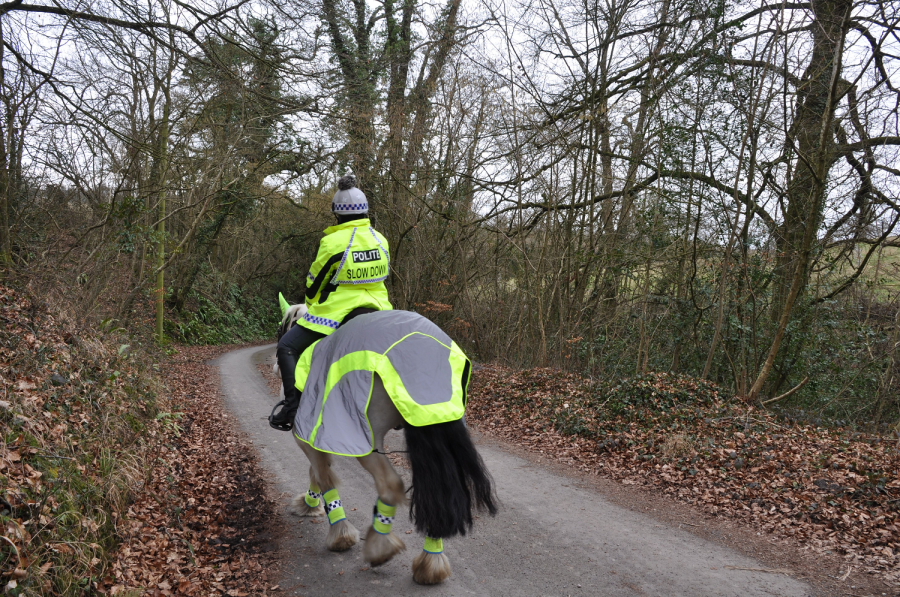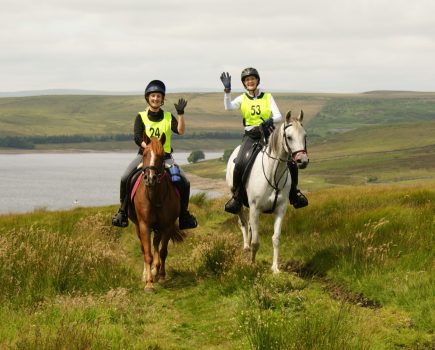High-vis clothing should be a staple of every rider’s wardrobe and needs to be worn every time you are hacking a horse. It helps you to be more visible — and therefore safer — especially on the road. Yet many riders still don’t wear high-vis, despite the dangers of riding on the road being well documented. Is wearing high vis a legal requirement, and could not doing so leave you vulnerable to potential claims in the event of an accident?
“There isn’t any traffic-related legislation that states you’re liable for a fine if you don’t wear reflective clothing while riding, so not wearing high-vis doesn’t mean you’ll have the police knocking on your door,” says equine solicitor and head of the Equine Law Team at Geldards LLP, Rebecca Stojak. “But it is a breach of the Highway Code.”
While the rules outlined in the Highway Code aren’t laws, that doesn’t mean they can be overlooked. Section 50 of the Highway Code sets out that riders should wear ‘light-coloured or fluorescent clothing in daylight’ and ‘reflective clothing if you have to ride at night or in poor visibility’.
“The Highway Code is a set of rules that you should be adhering to when hacking out,” explains Rebecca. “It’s used to back up other laws; traffic laws in England don’t tell us how to ride on the road, therefore the wronged party would potentially cite other civil laws and legal principles, such as negligence, when trying to bring a claim against a rider.”
Leaving you liable
“If you’re involved in an incident and not wearing high-vis, could it be argued that you were partially liable?” asks Rebecca. “Yes.”
Road users owe a duty of care to each other, and for horse riders that includes being seen and sensible while riding. If an incident occurs because a driver didn’t see you, then you could potentially have some responsibility in that, although Rebecca stresses that each case should be treated individually on its own facts.
“Hypothetically, if a horse is hit by a car, the car has been damaged and the rider has broken their leg, but they weren’t wearing high-vis, it could be argued that they share responsibility for the accident,” explains Becca. “The car driver’s solicitor may try to argue that the rider is partially liable because they weren’t wearing high-vis, so they weren’t doing everything they should have been, and could cite the Highway Code to back up this argument.
“But it always depends on the facts,” she says. “If the driver was going 90mph, would high-vis have meant they would have seen you and stopped? Probably not, because they were going too fast, and they may have hit you even if you were wearing high-vis.
“We are becoming more and more litigious, and people want to get out of being held responsible, or they want someone to blame,” continues Rebecca. “Other road users may try and use any which way to point blame and could say, ‘It was the rider’s fault, and this is why…’.
“Not wearing high-vis could ultimately impact your case,” she adds.
How much is enough?
While the Highway Code recommends what to wear, it doesn’t specify exactly how much high-vis riders should be wearing when riding in daylight. There is plenty of high-vis available for horses to wear too.
“What the law or courts would be looking at is what is reasonable in the circumstances,” explains Rebecca. “It depends on the situation. If you were hacking out at dusk or dawn it could be argued that you should be wearing more high-vis than in the middle of the day.
“There isn’t anything that states the minimum amount of high-vis that you should be wearing,” adds Rebecca. “You should ask yourself, ‘What is reasonable in the circumstances?’”
Main image: copyright Your Horse Library/Julie Harding








